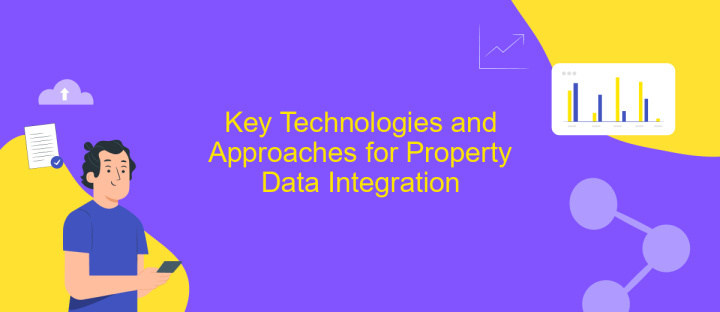Property Data Integration
In today's rapidly evolving real estate market, the seamless integration of property data has become essential for informed decision-making and strategic planning. Property Data Integration involves the consolidation of diverse datasets, enabling stakeholders to access comprehensive insights and analytics. By streamlining data from various sources, this approach enhances transparency, efficiency, and accuracy, empowering professionals to make data-driven decisions that drive growth and innovation in the industry.
Introduction to Property Data Integration
Property data integration is a crucial process in the real estate industry, enabling seamless access and management of property-related information. As the volume of property data continues to grow, integrating this data from various sources becomes essential for efficient decision-making and operational efficiency. This integration involves the consolidation of data from multiple platforms, ensuring accuracy and consistency across all systems.
- Enhances data accuracy by eliminating duplicate entries and discrepancies.
- Facilitates better decision-making through comprehensive data analysis.
- Improves operational efficiency by streamlining data management processes.
- Enables real-time data access and updates, enhancing responsiveness.
By leveraging property data integration, businesses can gain a competitive edge in the market. The integration process not only improves data reliability but also supports advanced analytics, allowing companies to identify trends and insights that drive strategic initiatives. As technology continues to evolve, the importance of effective property data integration will only increase, making it a vital component of modern real estate management.
Challenges of Property Data Integration

Integrating property data from various sources presents multiple challenges, primarily due to the diversity of data formats and standards. Each data provider may use different systems and protocols, making it difficult to achieve seamless interoperability. Additionally, the volume of data can be overwhelming, necessitating robust infrastructure to handle large datasets efficiently. Ensuring data accuracy and consistency across platforms is another critical challenge, as discrepancies can lead to significant errors in property management and decision-making.
Another major hurdle is the security and privacy of sensitive property data. With increasing cyber threats, safeguarding data from unauthorized access is paramount. Moreover, setting up and maintaining integrations can be resource-intensive, requiring specialized skills and tools. Services like ApiX-Drive can alleviate some of these challenges by offering automated integration solutions, enabling smoother data flow between systems without extensive technical expertise. By simplifying the integration process, such services help organizations focus on leveraging data insights rather than grappling with technical complexities.
Key Technologies and Approaches for Property Data Integration

Integrating property data effectively requires leveraging a combination of advanced technologies and strategic approaches to ensure seamless data flow and accessibility. As the real estate industry becomes increasingly data-driven, the need for sophisticated integration solutions has never been more critical.
- API Integration: Utilizing APIs allows for real-time data exchange between different platforms, ensuring up-to-date information is always available.
- Data Standardization: Implementing consistent data formats and standards across systems helps maintain data integrity and compatibility.
- Cloud Computing: Leveraging cloud-based solutions provides scalable storage and processing power, facilitating efficient data management.
- Data Mapping and Transformation: Employing tools to map and transform data ensures that information from disparate sources can be accurately integrated.
- Security Protocols: Implementing robust security measures protects sensitive property data during integration and storage.
By adopting these technologies and approaches, organizations can streamline property data integration, enhancing decision-making and operational efficiency. As the landscape of property data continues to evolve, staying abreast of technological advancements will be crucial for maintaining a competitive edge.
Best Practices for Successful Property Data Integration

Integrating property data effectively is crucial for leveraging real estate insights and enhancing decision-making processes. To achieve seamless integration, it's essential to focus on data accuracy and consistency. Start by ensuring that all data sources are reliable and up-to-date, which will minimize discrepancies and enhance the overall quality of the integrated data.
Additionally, it's vital to adopt a standardized format for data entry and storage. This helps maintain uniformity across various datasets, making it easier to merge and analyze them. Utilizing advanced data integration tools can also streamline the process, allowing for automated data cleansing and transformation.
- Ensure data sources are reliable and current.
- Adopt standardized formats for data entry.
- Utilize advanced integration tools for automation.
- Regularly audit and cleanse data to maintain quality.
Finally, fostering collaboration among all stakeholders involved in the data integration process can lead to more successful outcomes. By encouraging open communication and feedback, potential issues can be identified and addressed promptly, ensuring that the integrated data serves its intended purpose effectively.
- Automate the work of an online store or landing
- Empower through integration
- Don't spend money on programmers and integrators
- Save time by automating routine tasks
Future Trends in Property Data Integration
As the real estate industry continues to evolve, the integration of property data is set to become more sophisticated and seamless. One emerging trend is the use of artificial intelligence and machine learning to enhance data analysis and decision-making processes. These technologies enable real estate professionals to gain deeper insights into market trends and property valuations, making data-driven decisions more accurate and timely. Additionally, blockchain technology is poised to revolutionize property data integration by providing secure, transparent, and immutable records, thereby reducing fraud and increasing trust among stakeholders.
Another significant trend is the growing adoption of integration platforms like ApiX-Drive, which facilitate the seamless connection of various data sources and applications. This service allows real estate companies to automate workflows and synchronize data across multiple platforms without the need for extensive technical expertise. As the demand for real-time data access and analysis grows, such platforms will become crucial in enabling businesses to remain competitive. Moreover, the emphasis on data privacy and security is expected to intensify, prompting the development of more robust data protection measures within integration solutions.
FAQ
What is property data integration?
Why is property data integration important?
How can property data integration be automated?
What challenges might arise during property data integration?
How can I ensure data security during property data integration?
Strive to take your business to the next level, achieve your goals faster and more efficiently? Apix-Drive is your reliable assistant for these tasks. An online service and application connector will help you automate key business processes and get rid of the routine. You and your employees will free up time for important core tasks. Try Apix-Drive features for free to see the effectiveness of the online connector for yourself.


